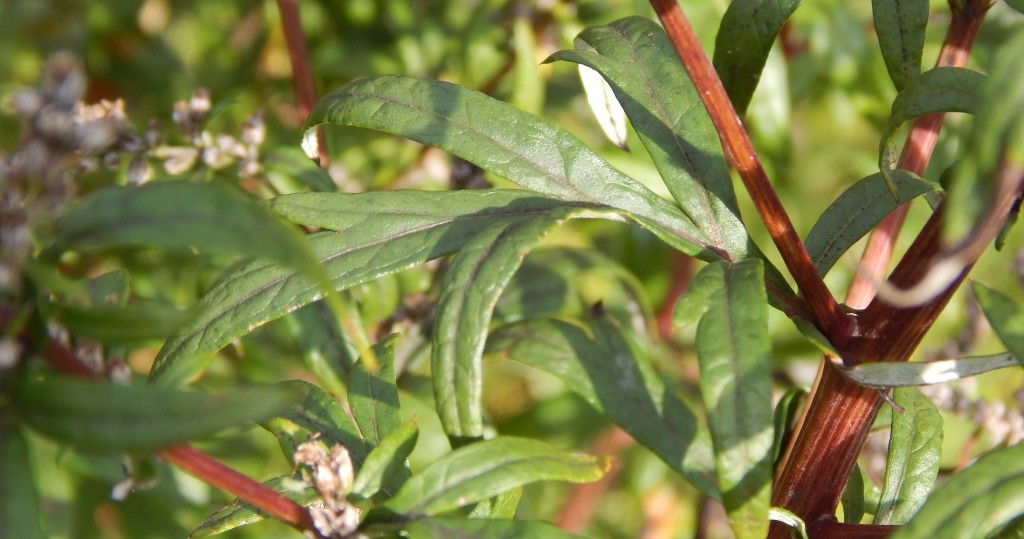
[041] Artemisia vulgaris, Common Mugwort
Introduction
Artemisia vulgaris, Mugwort, is a very common and widespread, tall, bushy wild flower with insignificant flowers. It is in a genus with other species that are called called wormwood and sagebush and others called mugwort – so we should really call it Common Mugwort.
Wikipedia give a list of alternative names – riverside wormwood, felon herb, chrysanthemum weed, old Uncle Henry, sailor’s tobacco, naughty man, old man or St. John’s Plant!
Taxonomy
Kingdom – Plants
Division – Vascular Plants
Class – Angiosperms (Flowering Plants)
Order – Asterales
Family – Asteraceae
Genus – Artemisia
Scientific Name – Artemisia vulgaris
Name
Mugwort is an Old English word for the plant, cognate with midge-wort where ‘wort’ is a general herb or plant.
Artemisia comes from the Greek goddess Artemis and may refer to Queen Artemisia of Caria a botanist who died in 350 BC. Vulgaris is very commonly used to mean common.
Description
A vulgaris is a tall, perennial plant that spreads vegetatively. It can look like a bush although it consists of many separate tall stems.

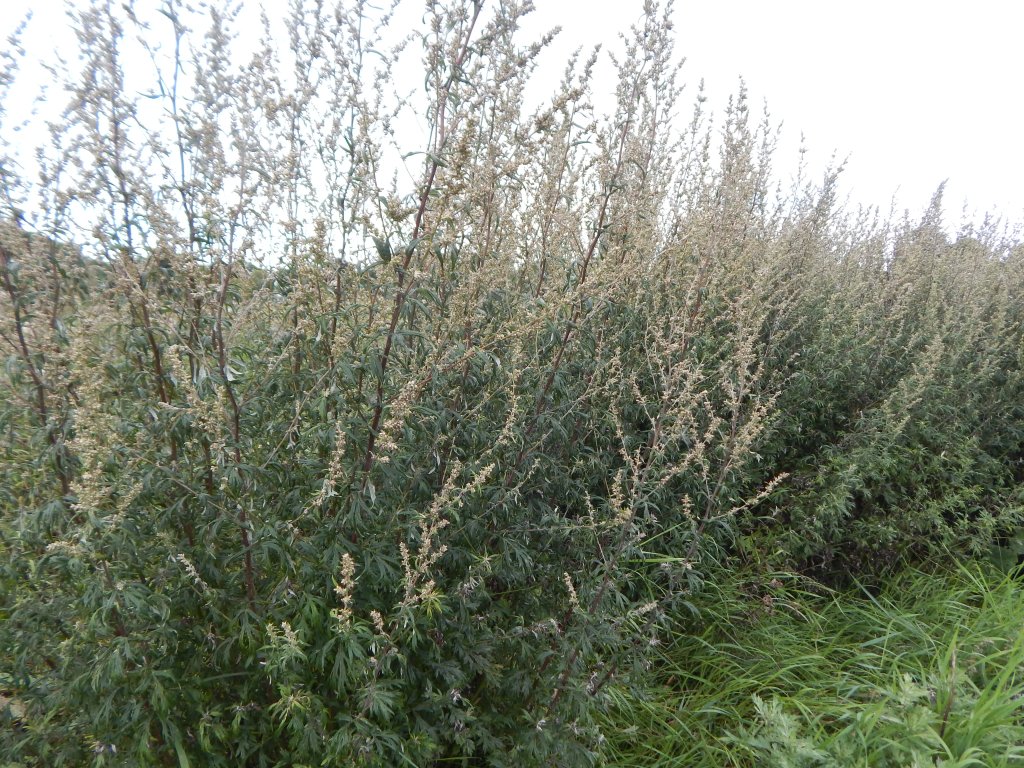
It has attractive dark green leaves and a thick, dark red stem.
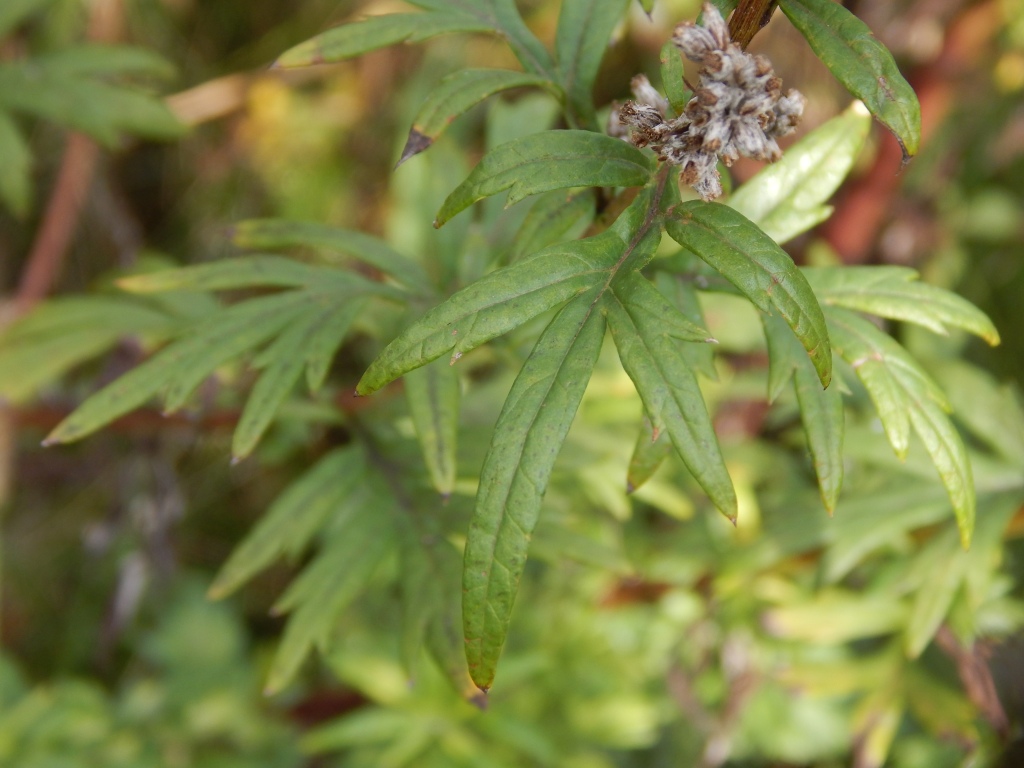
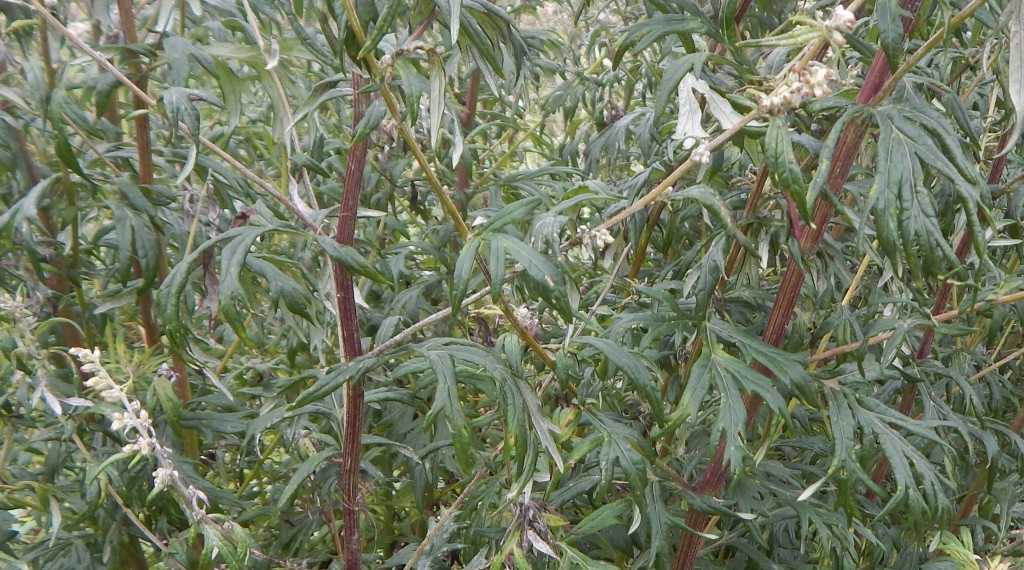

As a member of Asteraceae, its ‘flowers’ are inflorescences of several tiny florets. They are tiny and insignificant. You need to look closely to find them even though many grow together.
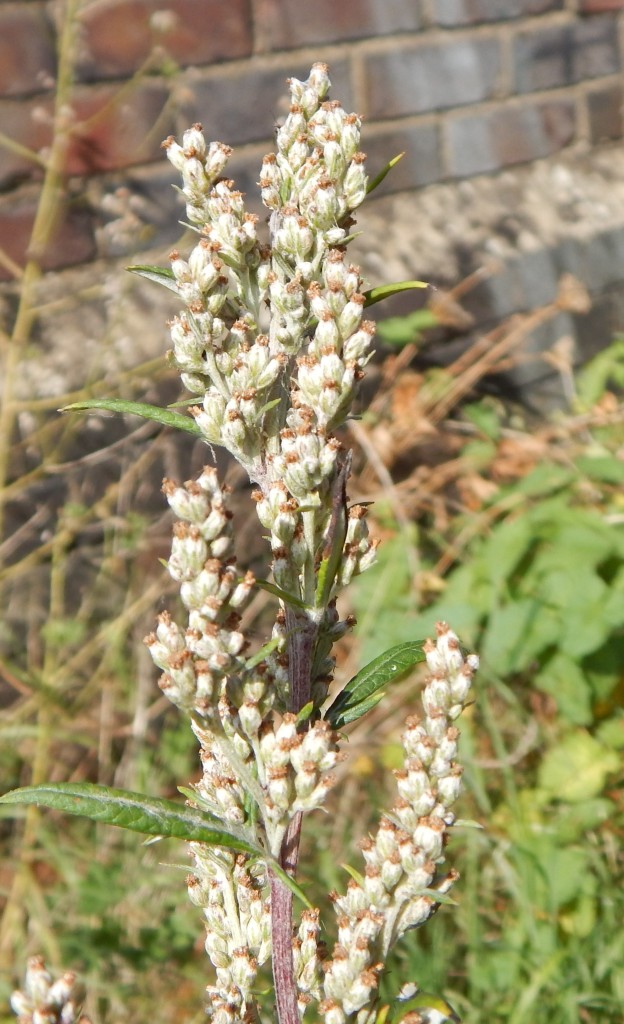
Habitat and use
Mugwort is native to most of Europe, Asia and North Africa and has become naturalised in North America, where in places it is considered invasive.
Artemisia vulgaris has been used as a herb to repel midges, fleas and moths; and in brewing.
Many other Artemisia species are used herbally or for their bitter taste in the production of vermouth and absinthe.
Other Notes
There are not many plants that I would describe as weeds but Mugwort is one of them. It spreads wildly in open areas such as local footpaths and in areas set aside for wildflowers.
It is host to a number of butterflies and moths and you may even spot the larva of [169] the Harlequin Ladybird.


See also
We have lots of annual wildflowers but not many such large unwanted perennial wildflowers.
